On December 1, 2023, Chongqing University published the latest research findings in the top journal Science as the first completion institution and the first corresponding author. Titled 3D Microscopy at the Nanoscale Reveals Unexpected Lattice Rotations in Deformed Nickel, the research is a new breakthrough achieved by Prof. Huang Xiaoxu's team from CQU's School of Materials Science and Engineering and other co-authors in the field of nano-metals by operating the self-developed 3D transmission electron microscope technology. Previously, CQU's School of Materials Science and Engineering has published five papers about materials science in Science and Nature.
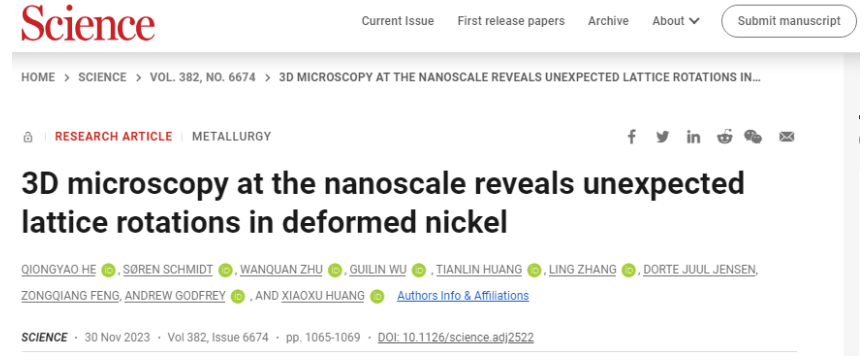
Webpage screenshot of published papers

Prof. Huang Xiaoxu
The traditional electron microscope technology can only be used to observe the sample surface or the 2D projection of the 3D structure inside the material, which greatly limits people's understanding of the material microstructure. Therefore, the scientists all over the world have devoted themselves to developing the 3D characterization technology in the past twenty years, and have made significant progress by applying spatial resolution in the research and development of 3D microscale characterization technology, which has promoted the reveal of important scientific discoveries in the field of materials science. However, there are more and deeper problems in materials science that need to be solved by 3D characterization technology at nanoscale or even atomic scale. Thus, a great challenge appears, i.e. the spatial resolution needs to be improved by three orders of magnitude from microscale to nanoscale.
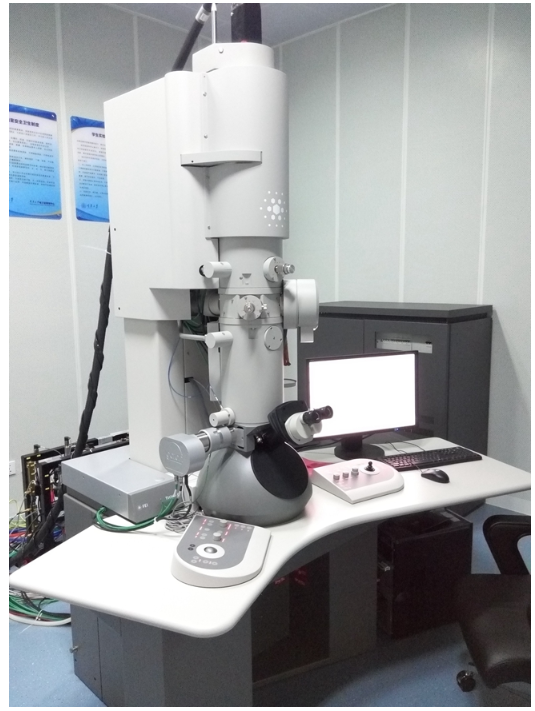
3D transmission electron microscope
After more than ten years of unremitting efforts, supported by projects under the National Key R&D Program, Prof. Huang Xiaoxu's team has successfully developed a series of 3D transmission electron microscope technologies with a spatial resolution of 1 nm based on the electron diffraction. The research and development of these technologies fill the gap of nanoscale 3D electron microscope orientation imaging technology, greatly promoting the development of 3D materials science.
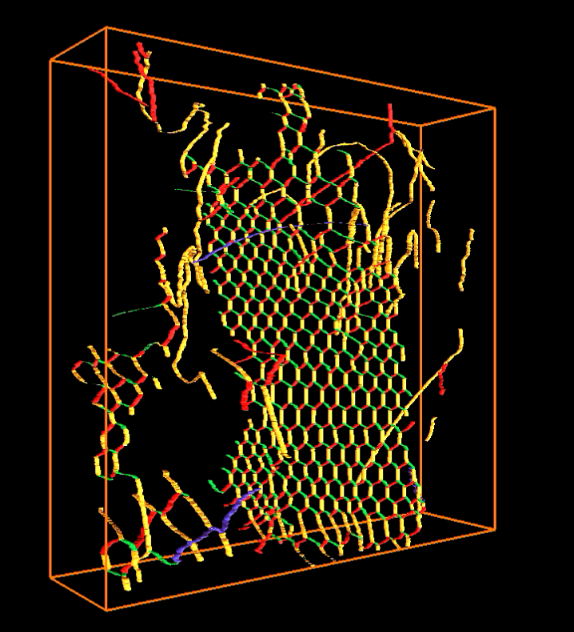
3D transmission electron microscopy of dislocation interface in metals
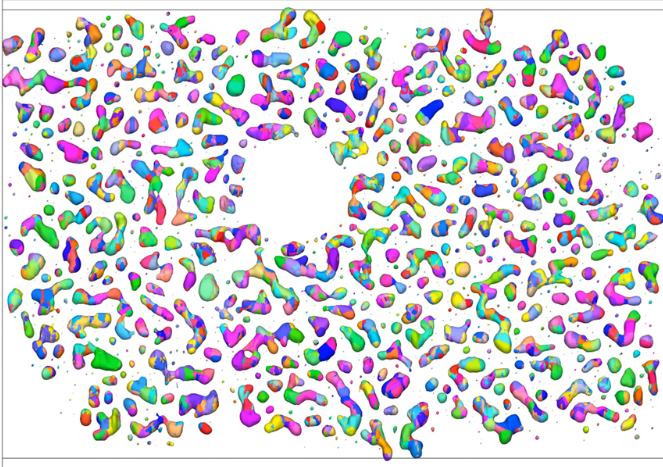
3D transmission electron microscopy of gold nanoparticles
In this research, the 3D electron microscopy on plastic deformation of nano-metal is realized for the first time by 3D orientation imaging technology. In addition, the abnormal recovery of plastic strain of nano-metal is found, and the physical essence of this phenomenon is revealed. These new findings promote the development of the plastic deformation theory of nano-metal and will provide theoretical guidance for the research and development of advanced nano-structured materials, the prediction and control of nano-material service behavior and the functional optimization of micro-nano devices.
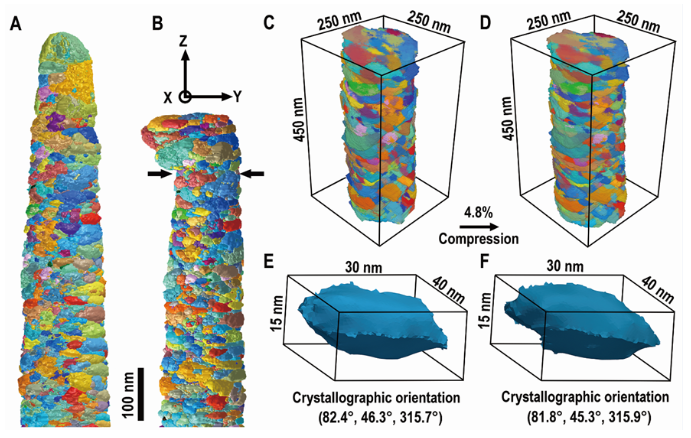
3D morphology and crystal orientation change of nano-nickel before (A) and after (B) deformation.
Prof. Huang Xiaoxu's team has been committed to the research of advanced characterization technologies and nano-metals, and has made many innovations in the research and development of 3D characterization technologies and deformation mechanism and strengthening mechanism of nano-metals, and also published related achievements in Science and Nature many times.
It is worth mentioning that Dr. He Qiongyao from Chongqing University/Southwest Institute of Technology and Engineering and Dr. Søren Schmidt from European Spallation Source are joint first authors of this research and Prof. Wu Guilin from Chongqing University/University of Science and Technology Beijing, Prof. Andrew Godfrey from Tsinghua University and Prof. Huang Xiaoxu are joint corresponding authors. Furthermore, Dr. Zhu Wanquan, Prof. Huang Tianlin, Prof. Zhang Ling and A.P. Feng Zongqiang from Chongqing University and Prof. Dorte Juul Jensen from Technical University of Denmark are co-authors.
Link of the original text:
https://www.science.org/doi/10.1126/science.adj2522
